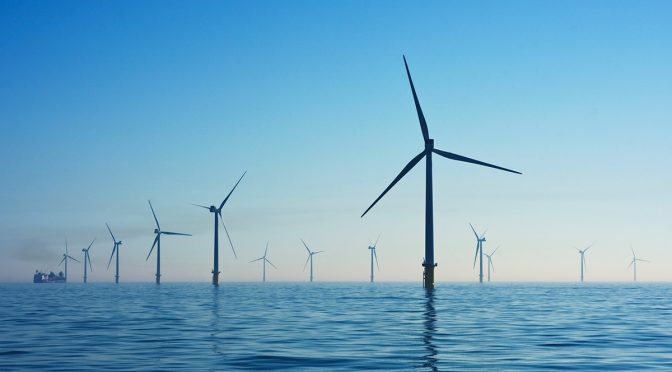The offshore wind industry will explode in the coming years, with a projected capacity of 500 gigawatts on water by 2050. However, the challenge remains: how can this vast amount of energy be efficiently transported and used? Enter Copenhagen Energy Islands, an innovative company that aims to address this problem through a network of 10 offshore green hydrogen plants.
Copenhagen Energy Islands, led by Copenhagen Infrastructure Partners (CIP), plans to build renewable energy centers, each with a capacity of approximately 10 gigawatts, for a total of 100 gigawatts. While exact locations have yet to be determined, potential sites in the wind-rich North Sea, Baltic Sea and Southeast Asia are being considered.
So why focus on the islands? Copenhagen Energy Islands emphasizes the need for scalability when it comes to integrating offshore wind energy into the global energy system. With major economies planning to deploy more than 500 gigawatts of offshore wind capacity by 2050, a more efficient system to move this energy to land is crucial.
This is where green hydrogen, also known as power-to-gas, plays a key role. By producing hydrogen from water through electrolysis, wind energy can be harnessed to create a fossil-free gas. Green hydrogen has a wide range of applications, including fuels, food systems, pharmaceuticals, metallurgy, refining and other industrial processes.
In addition to its versatility, green hydrogen offers several advantages for offshore wind farms. Wind farms often produce excess power at night, when demand is low, leading to curtailment orders. By using green hydrogen facilities, this surplus clean energy can be used productively, solving the problem of curtailment. Additionally, green hydrogen can be easily transported to shore from offshore wind farms via pipelines or ships, significantly reducing transmission costs.
Copenhagen Energy Islands envisions these offshore facilities not only as power plants but also as energy vectors that facilitate connections to local and global energy markets. Green hydrogen can also serve as a storage medium, generating electricity from renewable resources when needed.
While the concept of power-to-gas is relatively new, the rapid growth in this field is undeniable. By deploying proven technologies at scale, Copenhagen Energy Islands aims to achieve profitability and leverage existing marine infrastructure supply chains.
The future is not limited only to power-to-gas. Power-to-X technologies, covering electrofuels and other hydrogen products, offer even more possibilities for sustainable energy solutions.
As the offshore wind industry continues to expand, Copenhagen Energy Islands presents an innovative and transformative approach. By combining offshore wind energy with green hydrogen, this company paves the way to a cleaner, more efficient energy future.
FREQUENTLY ASKED QUESTIONS:
- What are the Copenhagen Energy Islands?
Copenhagen Energy Islands is a company led by Copenhagen Infrastructure Partners (CIP) that aims to build renewable energy centers with offshore green hydrogen plants to address the challenges of efficiently transporting and using the growing amount of energy generated by the offshore wind farms. - How much capacity does Copenhagen Energy Islands plan to have?
Copenhagen Energy Islands plans to have a total capacity of 100 gigawatts, and each renewable energy center will have a capacity of approximately 10 gigawatts. - Where are the possible locations for the Copenhagen Energy Islands?
The exact locations of the renewable energy centers have yet to be determined, but potential sites in the wind-rich North Sea, Baltic Sea and Southeast Asia are being considered. - What is green hydrogen and why is it important?
Green hydrogen, also known as power-to-gas, is produced from water through electrolysis using wind power. It is a fossil-free gas with various applications, including fuel, food systems, pharmaceuticals, metallurgy, refining, and other industrial processes. It plays a pivotal role in integrating offshore wind power into the global energy system and offers advantages such as solving curtailment problems and reducing transmission costs. - How can green hydrogen be transported from offshore wind farms?
Green hydrogen can be transported from offshore wind farms to shore through pipelines or ships, significantly reducing transmission costs. - What are the potential benefits of Copenhagen Energy Islands?
Copenhagen Energy Islands envisions offshore facilities not just as power plants but also as energy carriers that facilitate connections with local and global energy markets. Green hydrogen can serve as a storage medium and generate electricity from renewable resources when needed. Additionally, the deployment of proven technologies at a large scale can achieve cost-efficiency and leverage existing offshore infrastructure supply chains. - Definitions:
- – Offshore wind industry: The industry that involves the harnessing of wind power from wind farms located in oceans, seas, or large lakes.
- – Renewable energy hubs: Centers or facilities that generate renewable energy, such as wind power, and provide the infrastructure for its distribution and utilization.
- – Green hydrogen (power-to-gas): Hydrogen produced from water through electrolysis using renewable energy sources, such as wind power. It is a fossil-free gas.
- – Curtailment: The reduction or restriction of the output of a power plant or wind farm due to factors such as excess energy production or low demand.
- – Power-to-X technologies: Technologies that encompass various processes, such as power-to-gas and power-to-liquid, that convert renewable energy into other forms of energy or products, such as hydrogen-derived fuels.
- – Electrolysis: A process that uses an electric current to split water molecules into hydrogen and oxygen.
By Daniel Hall


